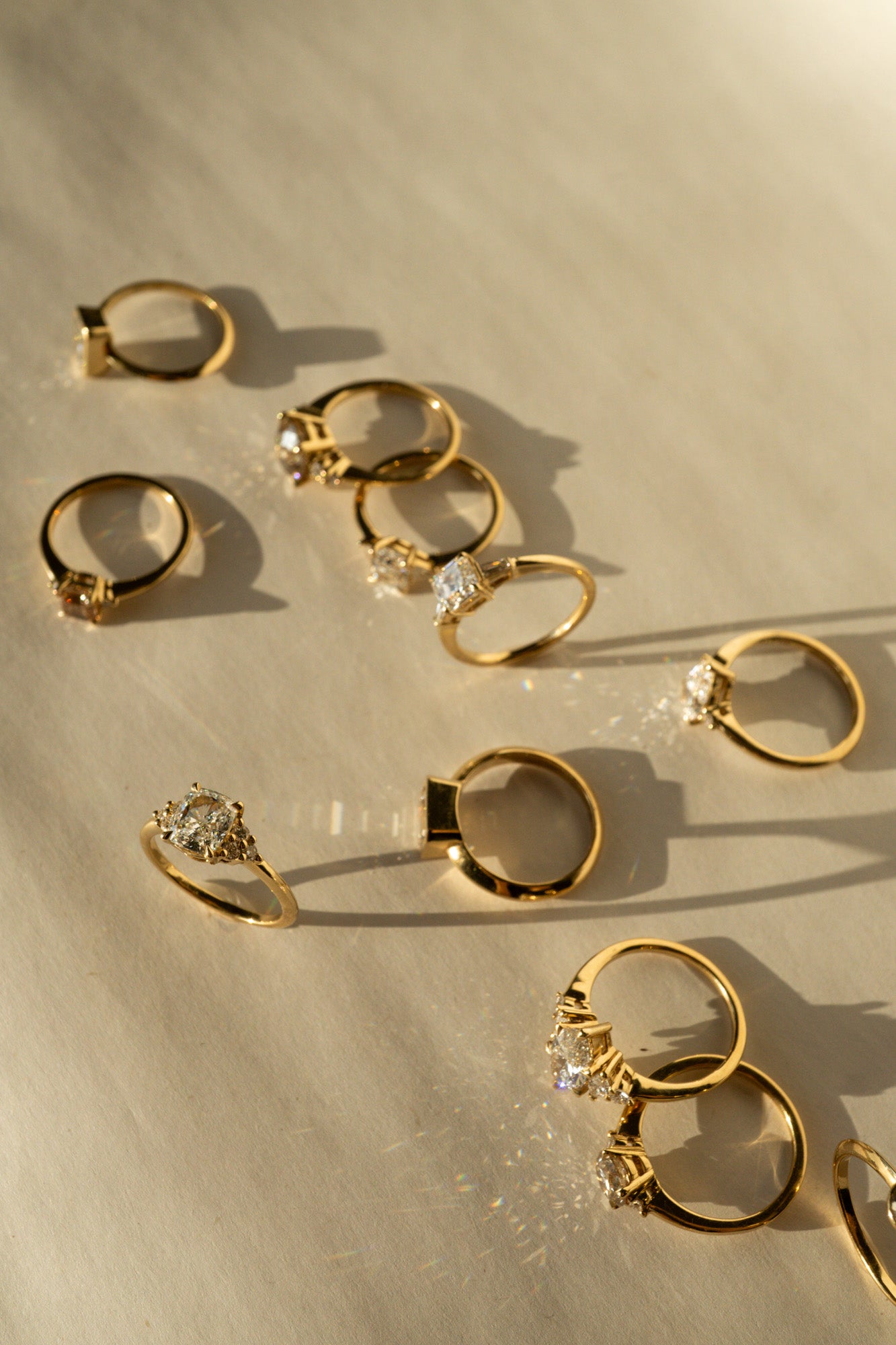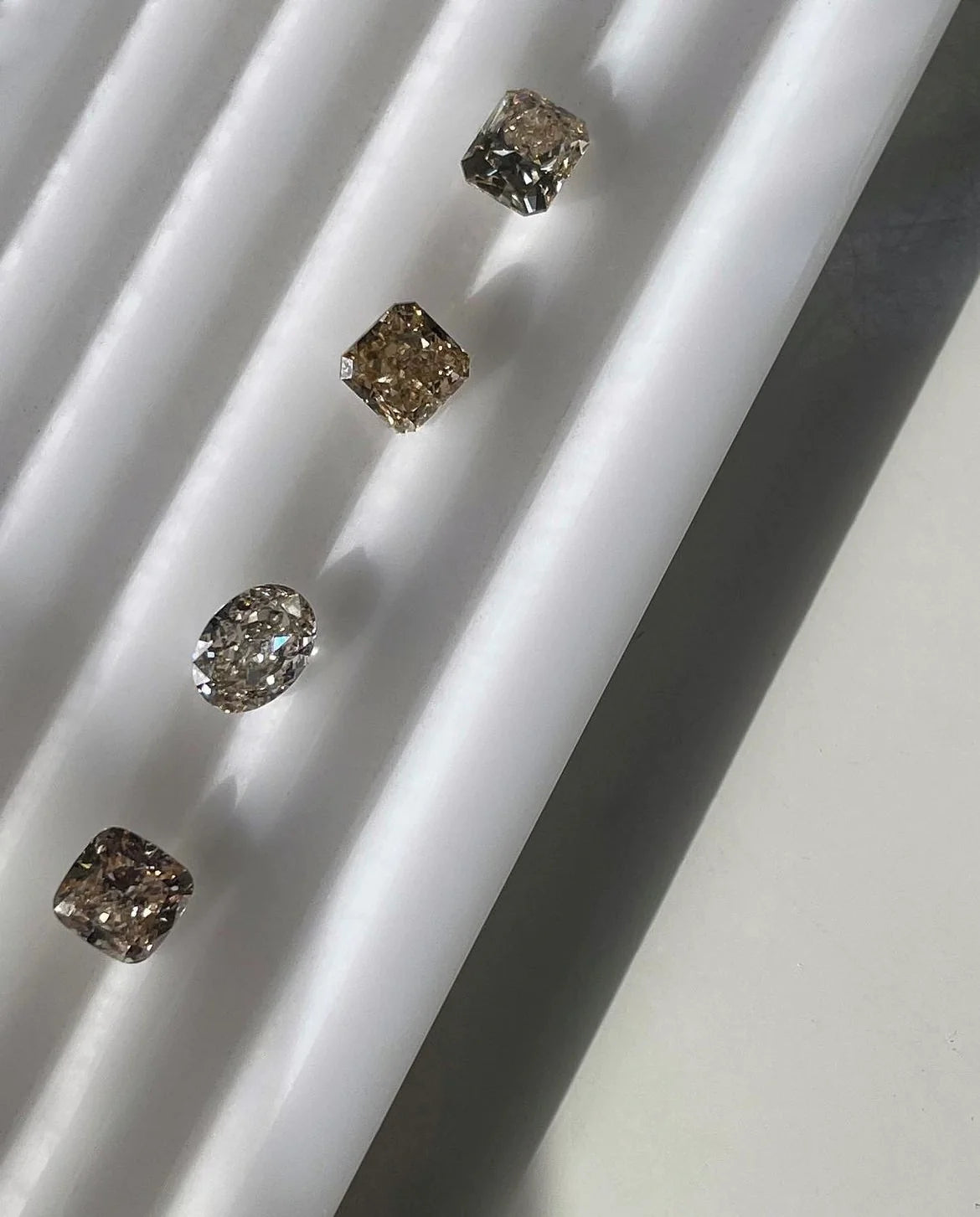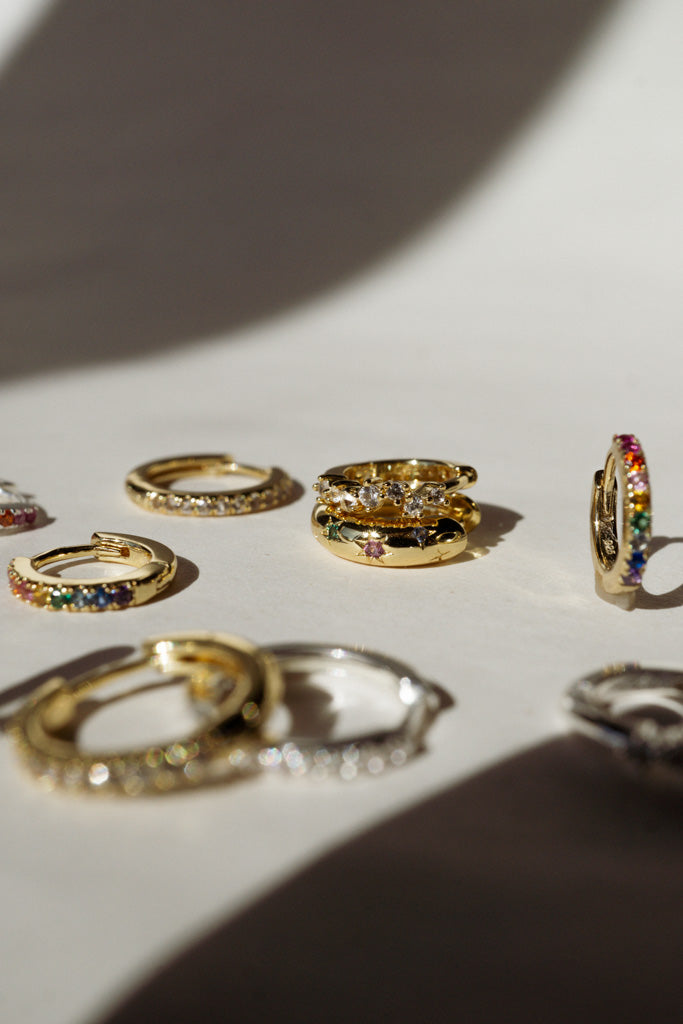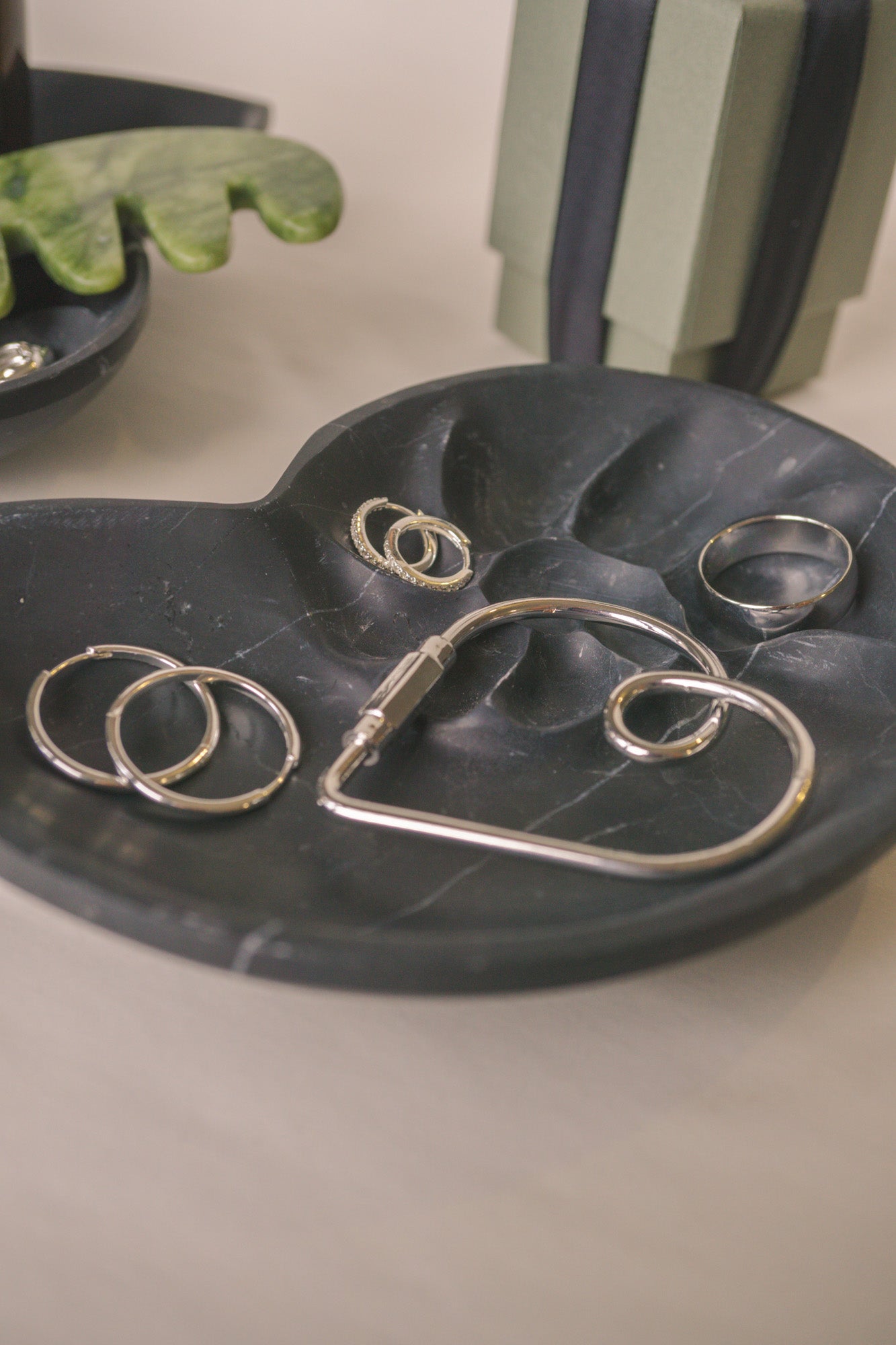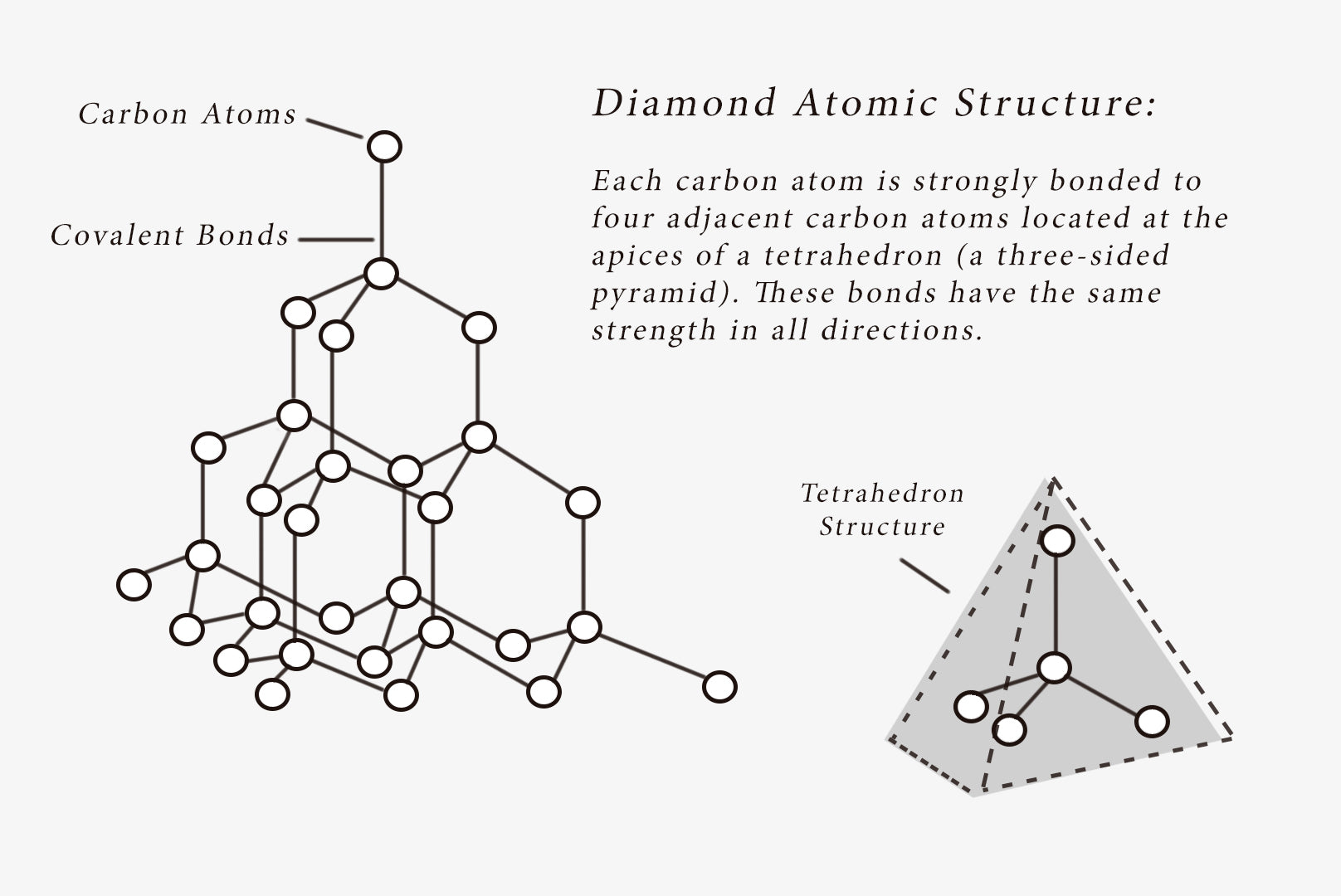
F&D | Guide to Lab-Grown and Mined Diamonds
Lab-grown diamonds and naturally mined diamonds are incredibly similar, they sparkle the same, they’re graded the same and they have the same chemical structure. When it comes to natural and lab-grown diamonds both can achieve the same look. Objectively, there is no superior method behind the growth of the diamond you choose. However, there are still some differences. Here we’ll outline some of the things you may want to consider while choosing a diamond.
To understand the difference between lab-grown and natural or mined diamonds we must understand what a diamond is. Regardless of where the diamonds are formed all diamonds are composed of a single mineral, carbon, crystalized in its isometric form. Diamonds are 99.95% carbon and can contain up to 0.05% of other atoms that aren’t essential to their chemistry. These trace amounts of other elements, like nitrogen, can be found within the diamond's composition and can influence its color or specific chemistry. All diamonds are rated a 10 on the Mohs Scale for hardness, meaning it's one of the hardest gemstones and can only be scratched by another diamond.
Natural and/or Mined Diamonds are used interchangeably to describe a diamond that has been collected from beneath the Earth’s surface. Naturally formed billions of years ago due to high pressure and temperatures, natural diamonds are found about 150 km below ground. Even when the terms “natural" or "mined" are not used as identifiers, it is understood that when the term diamond is used it is referring to naturally occurring, mined diamonds as is the industry standard.

Man-made or Laboratory-grown diamonds are essentially the same composition of bonded carbon atoms. The main difference is that instead of being formed beneath the Earth’s surface long ago, lab-grown diamonds are made within a few weeks or months within a lab. They have essentially the same physical, optical and chemical properties as natural diamonds. There are two main types of lab-grown diamonds, High Pressure High Temperature (HPHT) and Chemical Vapor Deposition(CVD), which both start out with a “diamond seed”.
Diamond Seed - a single diamond crystal, the size of about a slice of human hair
The High Pressure High Temperature (HPHT) lab-grown process recreates similar conditions a diamond would experience within the Earth’s mantle. The diamond seed is placed within a large press that can produce high pressure and high temperatures. During this process metallic flux is used as a catalyst for the carbon atoms to crystallize around the seed forming the lab-grown diamond. While natural diamond crystals tend to form as octahedrons, HPHT lab-diamond crystals typically have cubic faces in addition to octahedral ones. Making their internal growth patterns inherently different from naturally formed diamonds. These growth patterns are one of the most reliable ways to differentiate a natural diamond from a lab-grown diamond. Although through testing you can see the internal growth patterns it takes specialized equipment to do so and is not distinguishable to the naked-eye.
The Chemical Vapor Deposition (CVD) process uses hydrogen and methane gasses to grow the diamond. These gasses are heated to a high temperature to create plasma that deposits onto the diamond seed. The deposits form thin layers, building up over time to create the lab-grown diamond. These layers build up creating the diamond’s growth in a flat tabular shape. Similarly to an HPHT diamond, the CVD lab-grown diamond’s internal growth pattern is very distinguishable compared to a natural diamond.
Laboratory-grown diamonds are sometimes called Synthetic diamonds, although the term is becoming less popular as it can be misleading.

Imitation and simulant diamonds are not the same in their physical, optical or chemical properties as natural or lab-grown diamonds. An imitation diamond that only looks like a diamond to the naked eye is called a simulant. These simulants can be lab-grown or mined and are most commonly cubic zirconia, synthetic moissanite, or rock-crystal quartz. They won’t quite reflect light the same as a diamond, and won’t rate as high as a diamond on the Mohs hardness scale.
Natural diamonds and lab-grown diamonds are graded using the same system based on cut, color, clarity and carat. While the differences between the mined and lab-grown can only be determined through specialized tests and equipment, lab-grown diamonds are officially diamonds, not fakes.
Whether you’re purchasing a lab-grown diamond or a natural diamond there are benefits to each. There are some significant benefits to purchasing lab-grown diamonds: they’re ethical, environmentally conscious, and a cost effective choice. Similarly, all the naturally mined diamonds that we offer are ethically sourced and conflict-free, which means workers’ environments are up to a standard, not exploitative, and that their business provides a livelihood for their families and communities.
The lab diamonds we pick for our made-to-order “Create Your Own White Diamond Ring” inventory are IGI or GIA certified diamonds and come with a diamond report. All of our diamonds, both traditional and unique, are also conflict-free following the Kimberley Process.
Want to learn more about the world of diamonds? Check out The F&D Handbook.







